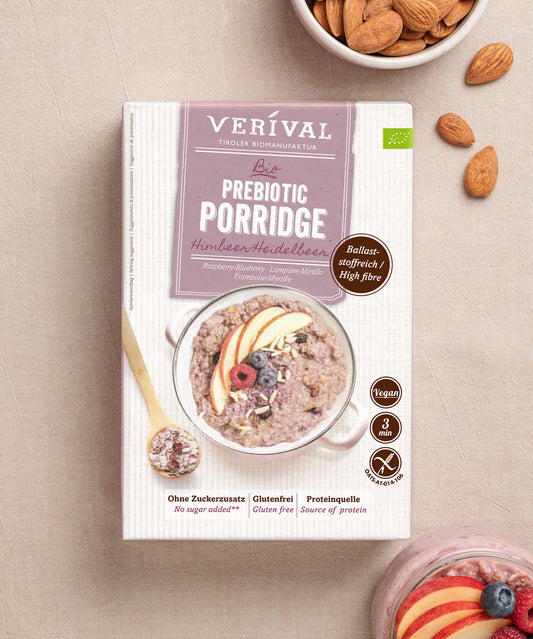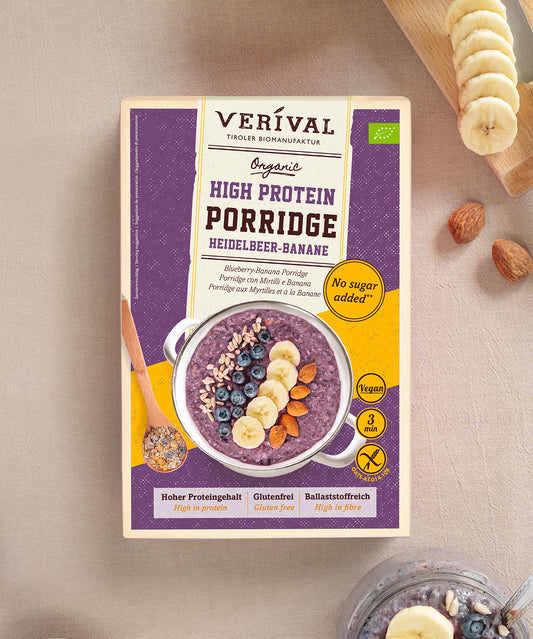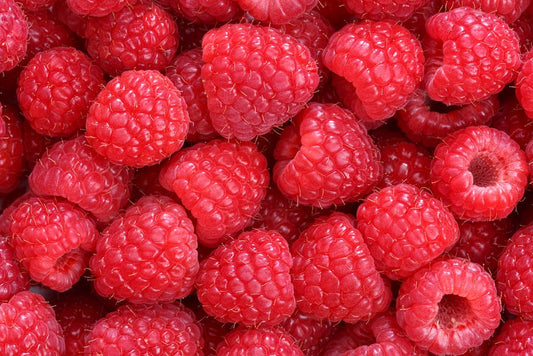Even though we at Verival have made it our goal to offer only organic breakfasts of the highest quality, one thing is certain: no, bioavailability has nothing to do with ‘organic’. But what does it have to do with?
Bioavailability is a term that is probably unfamiliar to many people. Those who have heard of it have usually encountered it in the context of medicines. Although the term already has a (very important!) role to play in nutrition, it is still in its infancy. So what does bioavailability mean and what are its benefits? We investigated these questions:
Try the highest quality organic breakfast
What does bioavailability mean?
Basically, the term bioavailability means the following: it is a pharmacological measure of the proportion of an active ingredient that is available unchanged in the systemic circulation, especially in the bloodstream. This measure indicates how quickly and to what extent the substance is absorbed and available at the site of action.
That sounds very complicated. It can be explained more simply as follows: the body has certain ‘barriers’ that substances must overcome. When I ingest something orally, it has to be processed. However, the active ingredient should still reach the right place in the body. Bioavailability then refers to how much of the substance is available as an effective substance at the site of action after processing by the intestines, liver or other so-called ‘barriers’. For substances administered intravenously, bioavailability is automatically 100 percent, as they are injected directly into the bloodstream. Bioavailability is usually calculated using a formula.
What are the benefits of this mysterious bioavailability?
But enough about pharmacology and medication. What are the benefits of this admittedly somewhat confusing concept of bioavailability in everyday life?
Basically, it is a shame that so little is currently being said about other forms of bioavailability. The topic is still neglected in nutrition. Nevertheless, there is already compelling evidence that this theory is not irrelevant to our well-being. A simple example of this would be carrots. To increase the bioavailability of the vitamins in carrots, fat is needed because the substances in carrots are fat-soluble. This means that fat increases the bioavailability of carrots. According to this simple principle, there are plenty of other vegetables and plants where bioavailability can be increased very easily. With many types of vegetables, it is important to cook them beforehand in order to achieve maximum bioavailability.
However, preparation is not the only thing that influences bioavailability. A person's age and healthy gut flora also play a major role in this process. The quality of the products and their enzyme content are equally important for maximising the bioavailability of various products. We can therefore conclude that bioavailability is extremely important for personal well-being. With a little care, you can easily get the most out of your food. But how can you pay attention to these different things?
5 simple tips on how to increase the bioavailability of products
1. It all starts with shopping
Our top priority is to shop fresh and local. If you buy a lot from the freezer, you simply don't have the same conditions as someone who buys fresh. That's why you should always try to consume your purchases as quickly as possible. If you store your groceries for a long time, you run the risk of losing nutrients. With fruit and vegetables, the process of respiration begins when they are picked – a natural process, but one that causes the plant to eventually use its own nutrients to stay alive. We therefore recommend: shop locally and eat quickly!
2. Eat the rainbow
Another important point is variety on your plate. The nutrient content of products fluctuates constantly and depends on how they are grown, but also on the soil in which the vegetables grow, for example. If you ensure seasonal variety on your plate, you also have a better chance of getting the most out of your products. Our recommendation: buy organic! Here you can assume that the soil is of good quality and not contaminated with too many pesticides.
3. Prepare correctly
It's not just variety that's important. How do I prepare my products? Many people swear by mixing raw foods with other types of preparation. So it's advisable not to just cook all vegetables. It makes perfect sense to mix in some raw pieces. Variety is the spice of life!
4. Chew, chew, chew
Our penultimate and very simple tip: chew! For decades, science has been saying that mindful chewing is important for getting the most out of your meal. The same applies to bioavailability: if you chew properly, you help the entire digestive process.
5. Listen to your gut
Not only proper chewing, but the entire digestive process plays an important role in bioavailability. The healthier the intestinal flora, the better nutrients can be absorbed. To keep the intestinal mucosa as free from inflammation as possible, it is therefore advisable to avoid alcohol, antibiotics and pesticides as much as possible, as well as simple sugars. Each of us can also name one, two or more foods that we do not tolerate very well. This is a clear sign from the body that you should pay attention to and eliminate the food in question from your diet as much as possible.
Other factors that inhibit bioavailability include stress, unhealthy meals and regular medication. Conclusion: if you take care of yourself, you are automatically well on your way to maximum bioavailability! 🙂
























